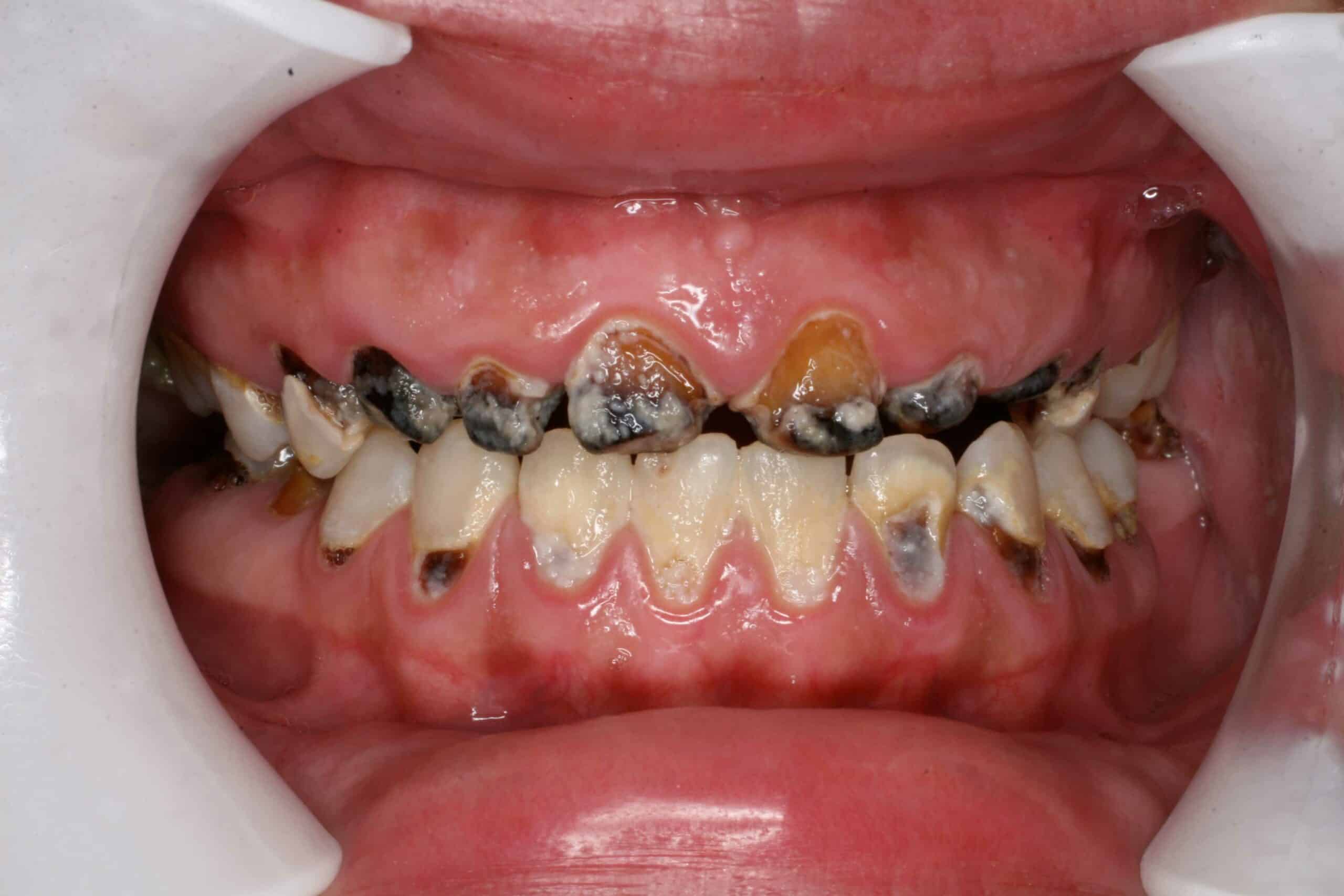One of the most common salivary gland stones is the submandibular gland’s duct sialolith. This is a case study of a recent patient who came in with such a stone.
This 24 year old white female presented to Cape Dental Care with an ulcer behind her front lower teeth. She was 2 month postpartum and went to her MD complaining of a sore jaw that swelled when she ate foods (especially sour foods). He looked around and told her it was probably an ulcer, prescribed antibiotics and told her it would probably go away. The swelling continued, she googled our office and made an appointment. Immediately upon hearing her story I suspected a blocked major salivary gland duct.
The ulcer she was pointing to behind her lower front teeth was the swollen opening to the right submandibular duct. This is the gland that provides a majority of the saliva needed to moisten food as we chew. It is also responsible for the calcified plaque (tartar or calculus) behind your front lower teeth when you go in for a cleaning. The “geezing” gland.
This stone formed somewhere inside the gland, has now made its way to the opening and got stuck. Plugging up a salivary gland can have consequences:
- Transient swelling especially when eating something sour
- Stagnation of salivary flow which can cause a bacterial infection
- Scaring of the gland
- Multiple stones
This stone was removed with a small amount of anesthetic. It was partially crushing to remove it in smaller pieces. Once the stone was dislodged a copious amount of saliva was expressed signaling a patent duct.
The patient was told to finish her antibiotic given to her by her MD and to contact the office if it is not feeling better in one week.
Some of the long term consideration involving salivary duct stones:
- They may reoccur. If the same conditions that cause the stone in the first place continue, then there may be more stones in the future
- Some stones may not be able to be expressed through the duct. This may cause back-up of saliva deep inside the gland. In these cases someone (oral surgeon) may have to probe the duct to fish it out or the gland may need to be removed.
Removing a major salivary gland has it’s unique problems. Removing a source of saliva may cause xerostomia (dry mouth). With a dry mouth the natural buffers found in saliva cannot help remove/control oral bacteria and cavities may become a serious problem.



